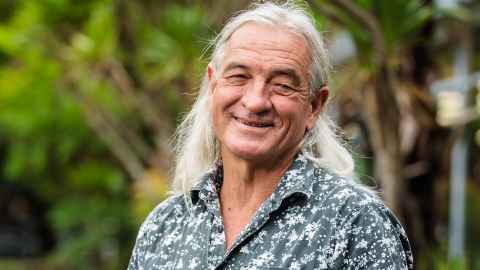Ian Hyslop: uncomfortable truths about child protection
1 March 2022
Opinion: Child protection social work is a fraught and emotive topic, writes Dr Ian Hyslop.

I worked in statutory social work bureaucracy for 20 years and have now spent more than 15 years in tertiary education, trying to communicate the relational skills needed to work ethically in the field of child protection social work.
My recently published book, A Political History of Child Protection – Lessons for Reform from Aotearoa New Zealand, explores the history of child welfare policy and identifies the social and economic roots of modern practice.
The book excavates some uncomfortable truths, although perhaps not the expected ones about the depths of family dysfunction or the abusive behaviours humans are capable of. It focuses rather on the systemic inequality that results from capitalist economic and social relations, and the history of the liberal state in relation to processes of social exclusion.
Since the late 19th century, efforts to define a ‘problem’ population on the margins of the working class have been linked to a remedial focus on the deviant behaviour of the residual poor. This divisive thread within the liberal political tradition serves to conceal the structural determinants of relative poverty and inequality in Aotearoa New Zealand and comparable societies.
It is families on the frayed edges of the working class – often young brown women parenting in relative poverty – who are disproportionately drawn into the contemporary child welfare and protection system. This situation is firmly rooted within the political economy of our settler colonial state. The New Zealand colonial project was not simply connected with the cultural imperialism of the late British Empire.
Colonisation involved the systematic separation of Indigenous Māori from their communal system of land ownership and production and the imposition of the social relations of liberal capitalism. More specifically, Māori children were assimilated within the Native School system and trained as a labouring workforce for white settler society.
From the later 1960s through the mid-1980s, tamariki Māori were taken into state care at approximately six times the rate of non-Māori. This had a flow-on effect to Māori disproportionality within the prison system which, in turn, generated a range of damaging consequences for whānau, hapū and iwi. The process of removing Māori children and young people into institutional care was facilitated by urbanisation, poverty and associated social suffering, and fuelled by institutional racism. As reported to the current Royal Commission of Inquiry into Historical Abuse in the Care of the State and Faith-Based Institutions, a lower standard of human rights was routinely applied to the children of the para-proletariat.
The ground-breaking Children, Young Persons and their Families Act, 1989 (now the Oranga Tamariki Act) was a significant move towards whānau, hapū and iwi empowerment in child protection policy and practice. Regrettably, the vision of this legislation was over-run by the neoliberal juggernaut of the 1990s. Responsibility without adequate resourcing, and power without genuine authority was not, and is not, a formula for effective child welfare outcomes.
Responsibility without adequate resourcing, and power without genuine authority was not, and is not, a formula for effective child welfare outcomes.
In many ways we have come full circle and are now at a crossroads for child protection. The convoluted and largely counter-productive reforms of the John Key-led National governments were, at least in part, generated by racist media-driven moral panic – the spectre of ‘feral’ Māori families posing a threat to ‘middle New Zealand’.
The social investment policy umbrella that focused on the forward fiscal cost of a beneficiary underclass carried all the hallmarks of early 20th century eugenics. The injunction of the Modernising Child Youth and Family Expert Panel to ensure that children were secured in safe and loving homes at the earliest opportunity was always going to generate a spike in the forced uplift of pēpi Māori.
The now infamous Newsroom exposure of events at Hawke’s Bay Hospital brought the trauma of ham-fisted child protection intervention into our living rooms and sparked a rash of public inquiries.
We are still working through the implications for future reform. Significantly, the Waitangu Tribunal report into the Wai 2915 claim – He Pāharakeke, He Rito Whakakīkanga Whāruarua – makes the point that the state must reduce socially unequal outcomes in relation to health, housing, education and income if te Tiriti obligations are to be honoured. The Tribunal recommended a planned transition to a redesigned for Māori, by Māori, child protection service in Aotearoa.
The government is yet to rise to this challenge. A socially just child welfare system is not impossible, but it requires a reconfiguration of authority in terms of the relationship between the Crown and Māori. It also requires a reconfigured redistributive economic system that focuses on the interests of working people and addresses the glaring inequalities that prevent this country from being what it could be. These are among the challenges facing social work policy, practice and research as we career into the third decade of the 21st century.
The views in this article reflect personal opinion and are not necessarily those of the University of Auckland.
This article first appeared as the Māramatanga column in the March 2022 edition of UniNews.